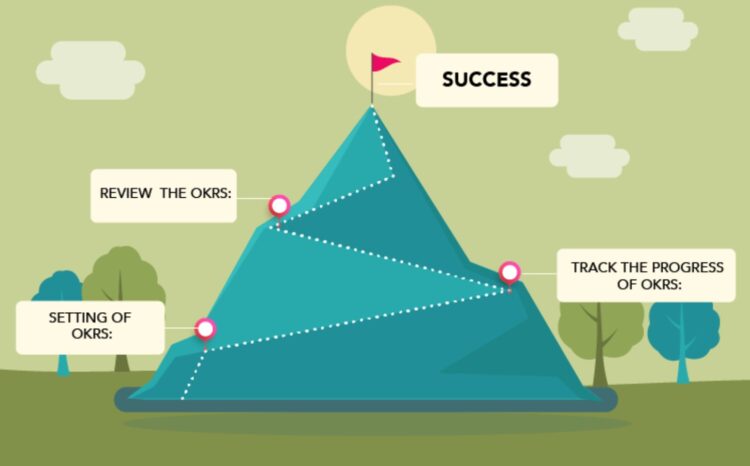
Objectives and Key Results is a business method used to set dynamic goals for a corporation, helping team members remain focused and productive while striving towards a singular objective. Using OKRs with your business can positively impact your company culture, improving the company’s individuals’ already pre-set values, goals, and desires.
What is company culture?
It is the combination of shared attributes, values, goals, and characteristics of a business, organization, or set of individuals working towards a common objective. By learning how to identify your company’s personality, what can be changed, and why it is important to your business’s mood and efficiency, you can increase organization morale and productivity.
Company culture encompasses a wide range of elements, like work environment, mission, leadership style, ethics, goals, expectations, values, and objectives. Other names for it include organizational and workplace culture.

How does company culture operate?
As you can see, it is imperative to the everyday functioning of the business. OKRs can help improve a business’s effectiveness, productivity, and efficiency by streamlining the goal-setting and achieving process across the workplace.
Creating OKRs to change the company climate is a crucial step in the formation of your business. By aligning the OKR goals with your workplace culture’s goals, you can ensure everyone is on the same page and moving towards a certain end product. Visit sites like this to educate yourself on some OKR examples that can affect organizational culture.
A company’s culture is usually expressed deliberately or from the accumulation of decisions made through the lifespan of the corporation. With a strong culture, employees understand the outcomes required, the business’s behaviors, and the leadership styles employed.
Some companies use a team-based climate to emphasize participation in various business sectors, ranging from customer service to management. On the other hand, other businesses use a more traditional and hierarchical form of culture.

How to identify company culture
There are many ways you can identify workplace climate in your corporation – identifying its type can help leaders brainstorm OKRs to positively influence the ethos of the brand.
- Check out the company website – if you look at the ‘About Us’ page of a website, you will get a broad sense of the corporation’s mission, values, beginning, and goals from the short blurb or background paragraph.
- Research on your own – check out reviews of the company online to see what others have to say about their experience working with, or for, the company.
- Ask around – if you know someone who previously worked for an enterprise and you’re interested in how it went, or you want to potentially be hired by your friend’s current corporation, you should set up an informational interview to learn as much as you can.
- Ask the right questions – during an interview, you want to ask questions that pertain to the workplace culture. Ask the senior staff how their OKRs can affect their company culture – if they have no OKRs specifically designated, ask them if they will create some in the future.
- Shadow someone – if you make it past the interview process and you are interested in working with this enterprise, spend the day following someone around to get an idea of how employees interact with each other.

Examples of OKR Culture!
On What Matters, you can read some in-depth examples of how OKR and goal-setting can positively impact the company culture of a business. Companies that utilize OKRs five main pillars in their everyday work life – focus, alignment, commitment, and the tracking of goals. By staying committed to this cultural identity, businesses can create a strong and open workplace.
There are many prerequisites to creating a positive OKR-based company culture. Let’s see how you can create it successfully using OKRs.
-
Align your company
Everyone needs to be on the same page to be successful. Align every individual and team in your business to focus on purpose and innovation in the future. The whole purpose of setting OKRs in the first place is to create a common goal, alignment, and focus on achieving the overarching objectives to move the business forward in all aspects.
-
Overcome failure
One of the biggest benefits of using OKRs is this process’s ability to help companies attain their most lofty goals. However, before you can achieve a far-reaching objective, you must accept the possibility of failure without letting the fear of failure stop you from trying in the first place.
A corporation needs to make sure their teams feel comfortable with taking risks and being honest with senior management when something doesn’t go as planned.
-
Have meaningful conversations
Being open and honest with every team member is a critical step in using OKRs to improve your company culture. Instead of making excuses, OKR demands individuals to engage in honest, two-way conversations to focus on progress and what improvements can be made in the future.

Conclusion
By using OKRs to positively impact your company culture, you can improve productivity, set attainable and dynamic goals, have meaningful conversations between team members, align your entire organization, and streamline efficiency.











